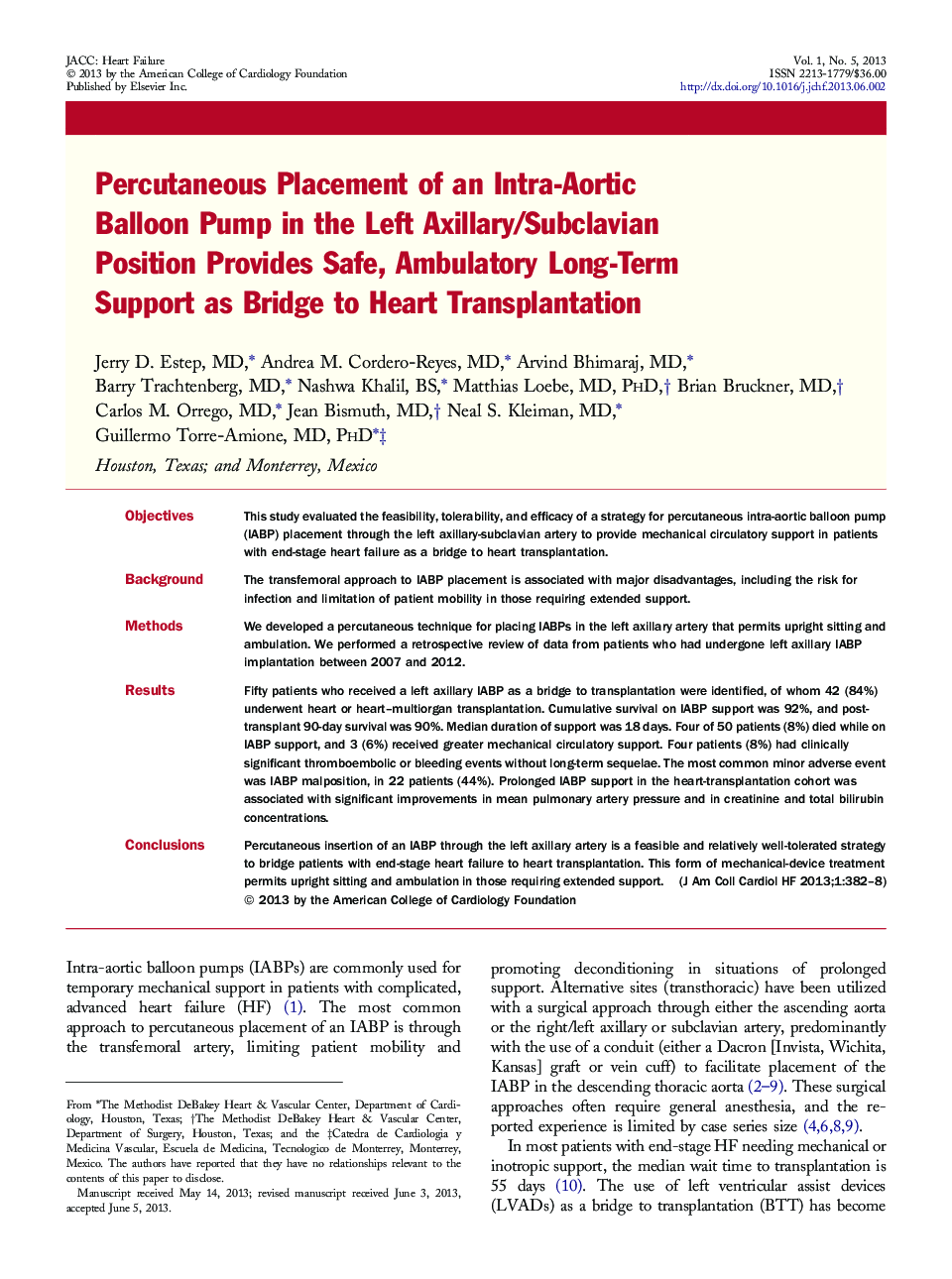| کد مقاله | کد نشریه | سال انتشار | مقاله انگلیسی | نسخه تمام متن |
|---|---|---|---|---|
| 2942665 | 1177141 | 2013 | 7 صفحه PDF | دانلود رایگان |

ObjectivesThis study evaluated the feasibility, tolerability, and efficacy of a strategy for percutaneous intra-aortic balloon pump (IABP) placement through the left axillary-subclavian artery to provide mechanical circulatory support in patients with end-stage heart failure as a bridge to heart transplantation.BackgroundThe transfemoral approach to IABP placement is associated with major disadvantages, including the risk for infection and limitation of patient mobility in those requiring extended support.MethodsWe developed a percutaneous technique for placing IABPs in the left axillary artery that permits upright sitting and ambulation. We performed a retrospective review of data from patients who had undergone left axillary IABP implantation between 2007 and 2012.ResultsFifty patients who received a left axillary IABP as a bridge to transplantation were identified, of whom 42 (84%) underwent heart or heart–multiorgan transplantation. Cumulative survival on IABP support was 92%, and post-transplant 90-day survival was 90%. Median duration of support was 18 days. Four of 50 patients (8%) died while on IABP support, and 3 (6%) received greater mechanical circulatory support. Four patients (8%) had clinically significant thromboembolic or bleeding events without long-term sequelae. The most common minor adverse event was IABP malposition, in 22 patients (44%). Prolonged IABP support in the heart-transplantation cohort was associated with significant improvements in mean pulmonary artery pressure and in creatinine and total bilirubin concentrations.ConclusionsPercutaneous insertion of an IABP through the left axillary artery is a feasible and relatively well-tolerated strategy to bridge patients with end-stage heart failure to heart transplantation. This form of mechanical-device treatment permits upright sitting and ambulation in those requiring extended support.
Journal: JACC: Heart Failure - Volume 1, Issue 5, October 2013, Pages 382–388